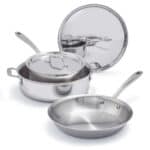This post may contain affiliate links. Please read our disclosure policy.
Here is how I cook couscous: Moroccan (the small kind,) pearl (medium,) and (the biggest) Lebanese, aka, Moghrabieh. Totally vegan and typically made from wheat, couscous is native to North Africa and popular throughout the Mediterranean.
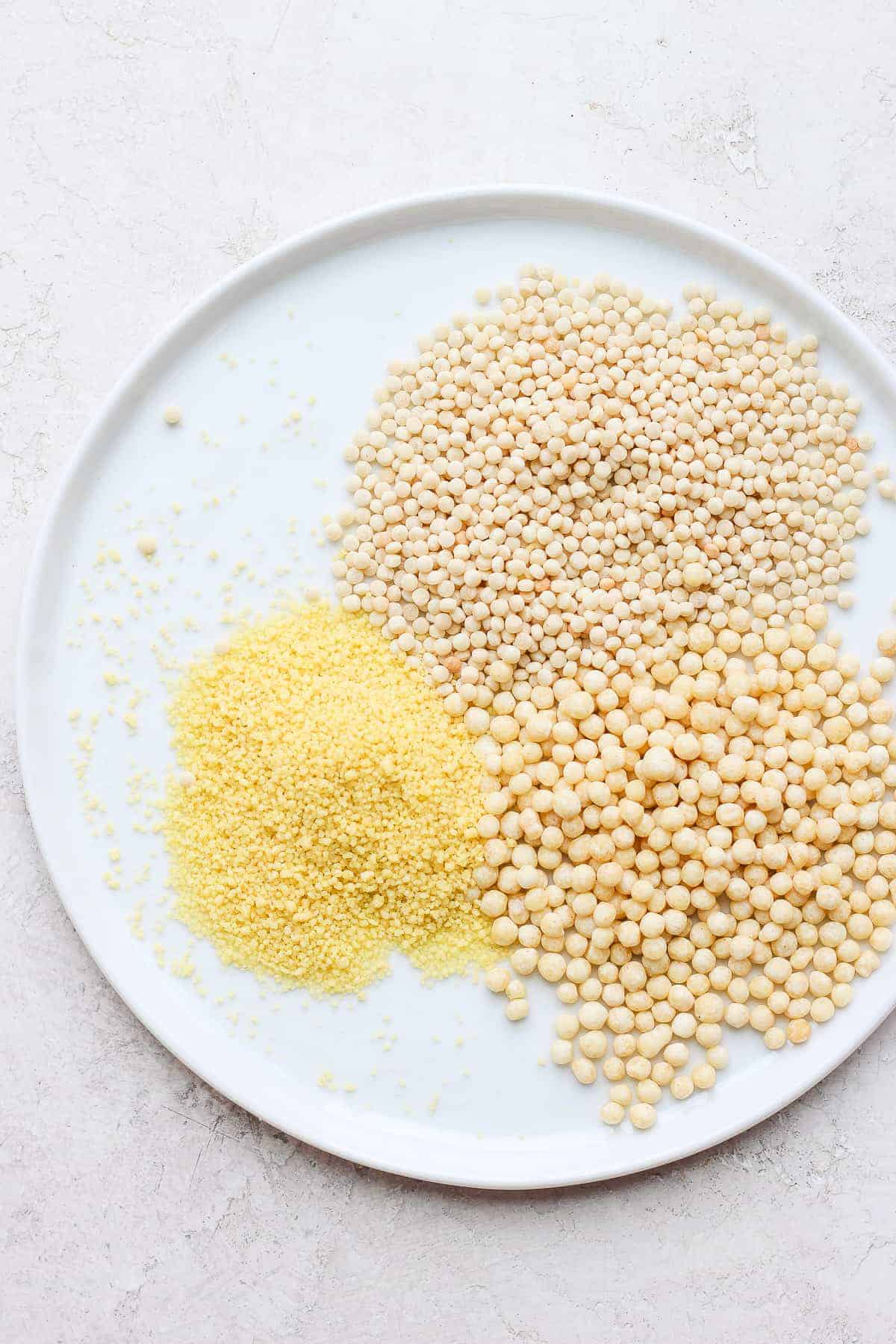
Couscous is semolina wheat, water, and salt. That’s all. No fat. No cholesterol. Some varieties are available in whole wheat or alternate grains like barley.
Three types of couscous
Couscous comes in three basic varieties/sizes: small, medium, and large. Which one is just right for you depends upon what you like and what you’re making.
- Moroccan Couscous: This small-grained couscous is the one most commonly sold in the U.S. Sprinkle it on salad greens like quinoa, mix with finely chopped veggies for a quick salad, or used like rice or pasta to soak up a saucy dish. Serve it hot or cold!
- Pearl Couscous: The larger toasted balls of this couscous have a softer, chewier texture, and a slightly nutty taste. This couscous loves salads.
- Lebanese Couscous/Moghrabieh: While this can be sub for pearl couscous, it is larger in size, and I typically only use it for traditional Moghrabieh recipe – which is named after the type of couscous used. Moghrabieh is a Lebanese chicken broth stew made with chickpeas and onions.
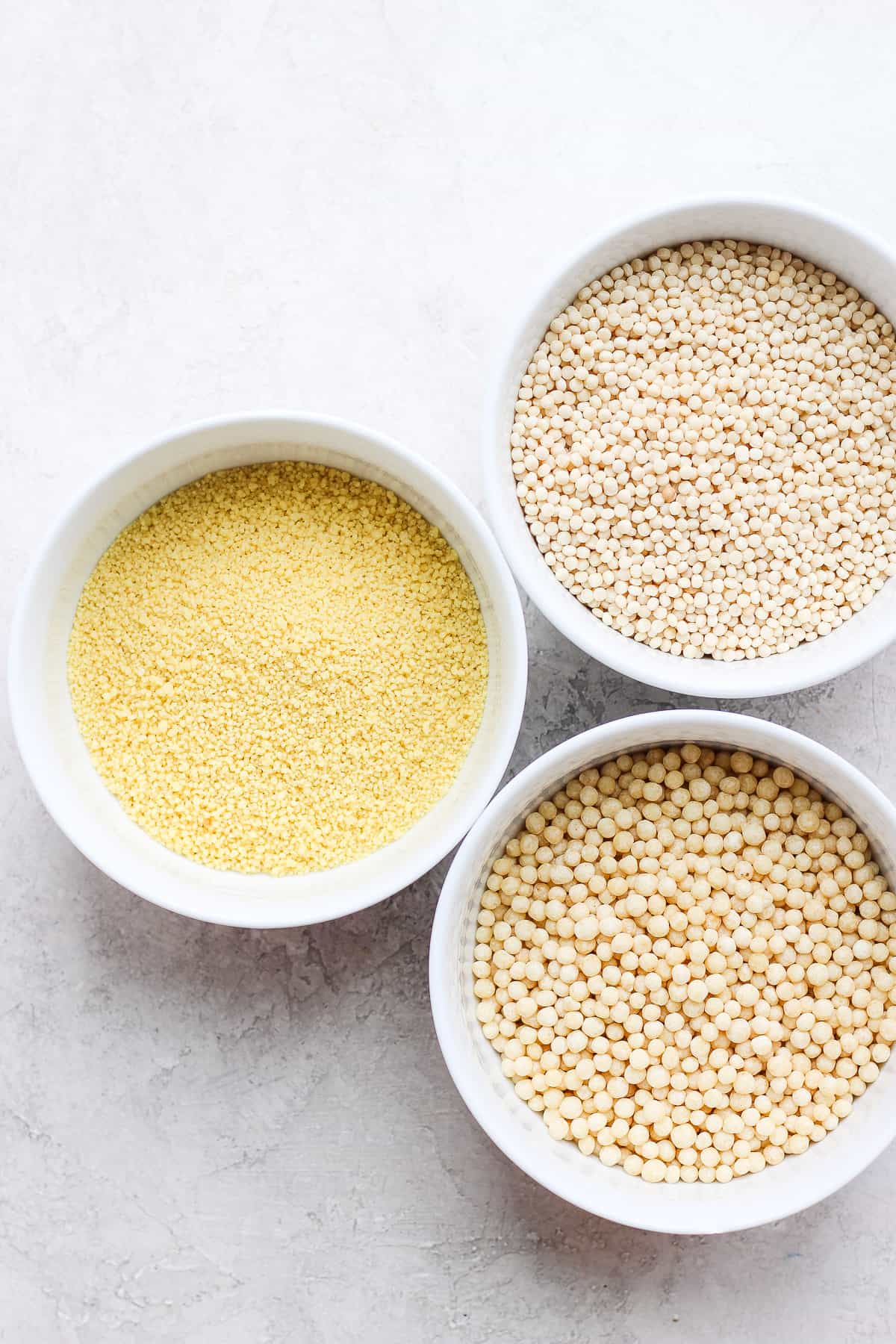
How to cook couscous
Moroccan couscous cooking instructions
Begin by rinsing the couscous in a fine-mesh sieve to remove extra starch.
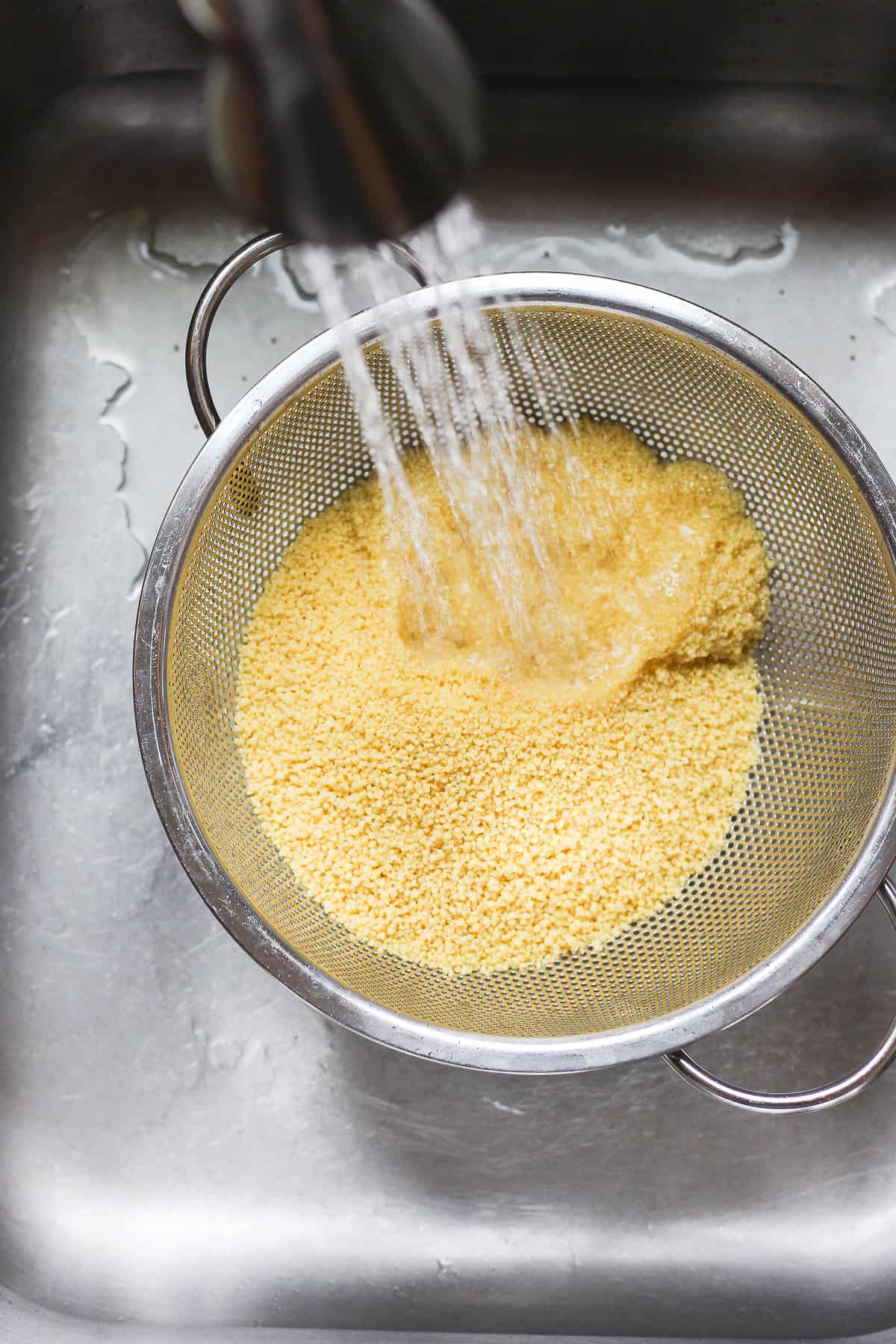
- In a small pot, bring water or stock along with salt to a boil. Take the pot off the heat. Add the rinsed couscous.
- Stir vigorously until all the liquid is absorbed, about 30 seconds to a minute.
- Cover and let stand for five minutes.
- Fluff with a fork and serve as a side or use in a salad.
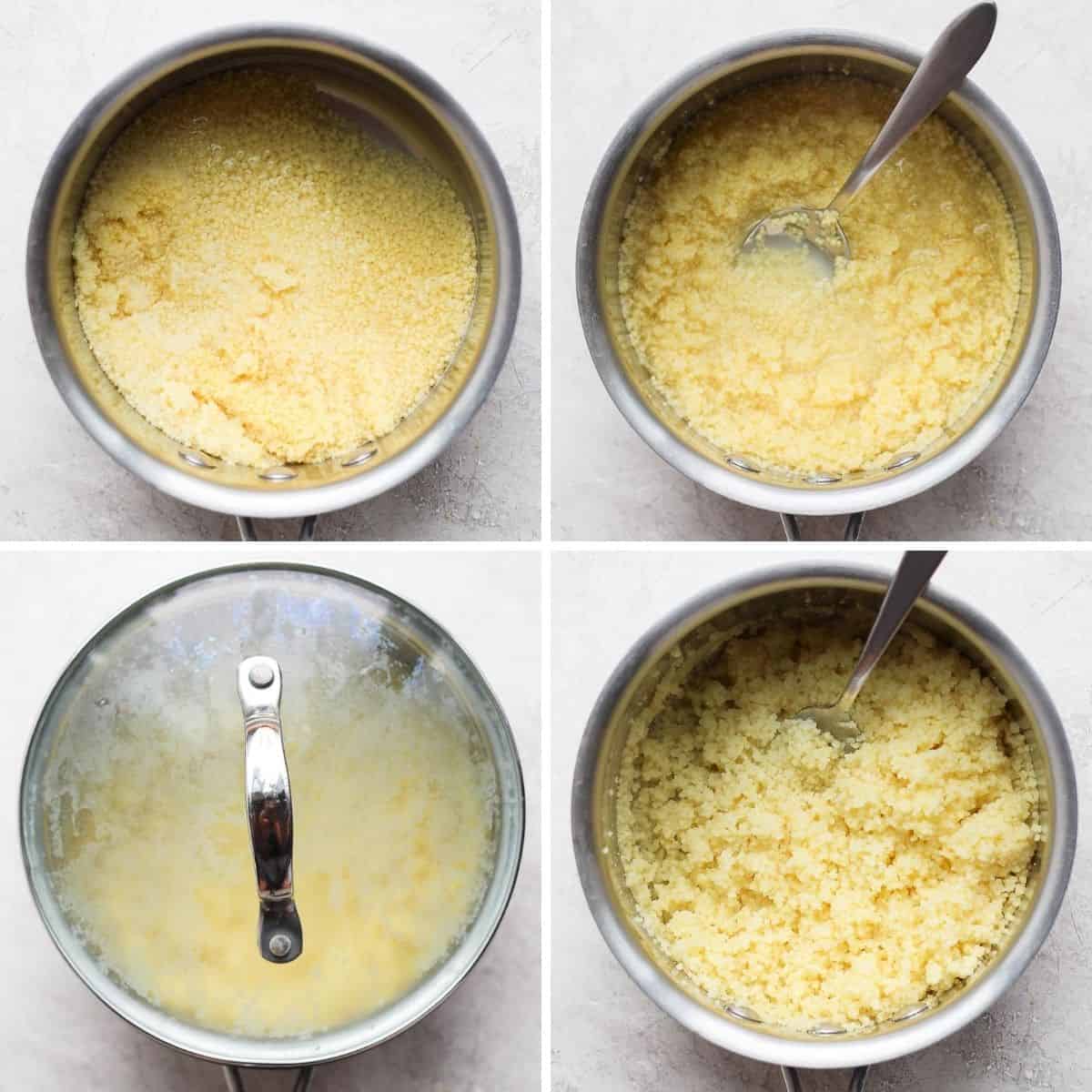
Pearl couscous cooking instructions
- Begin by rinsing couscous in a colander with cold water, making sure to agitate the couscous with your hands to rinse it. Drain immediately.
- In a small pot, bring water or stock and salt to a boil
- Add couscous and olive oil, reduce to a simmer.
- Cover and cook until all liquid has been absorbed, stirring occasionally, bout 10 minutes. Fluff and serve.
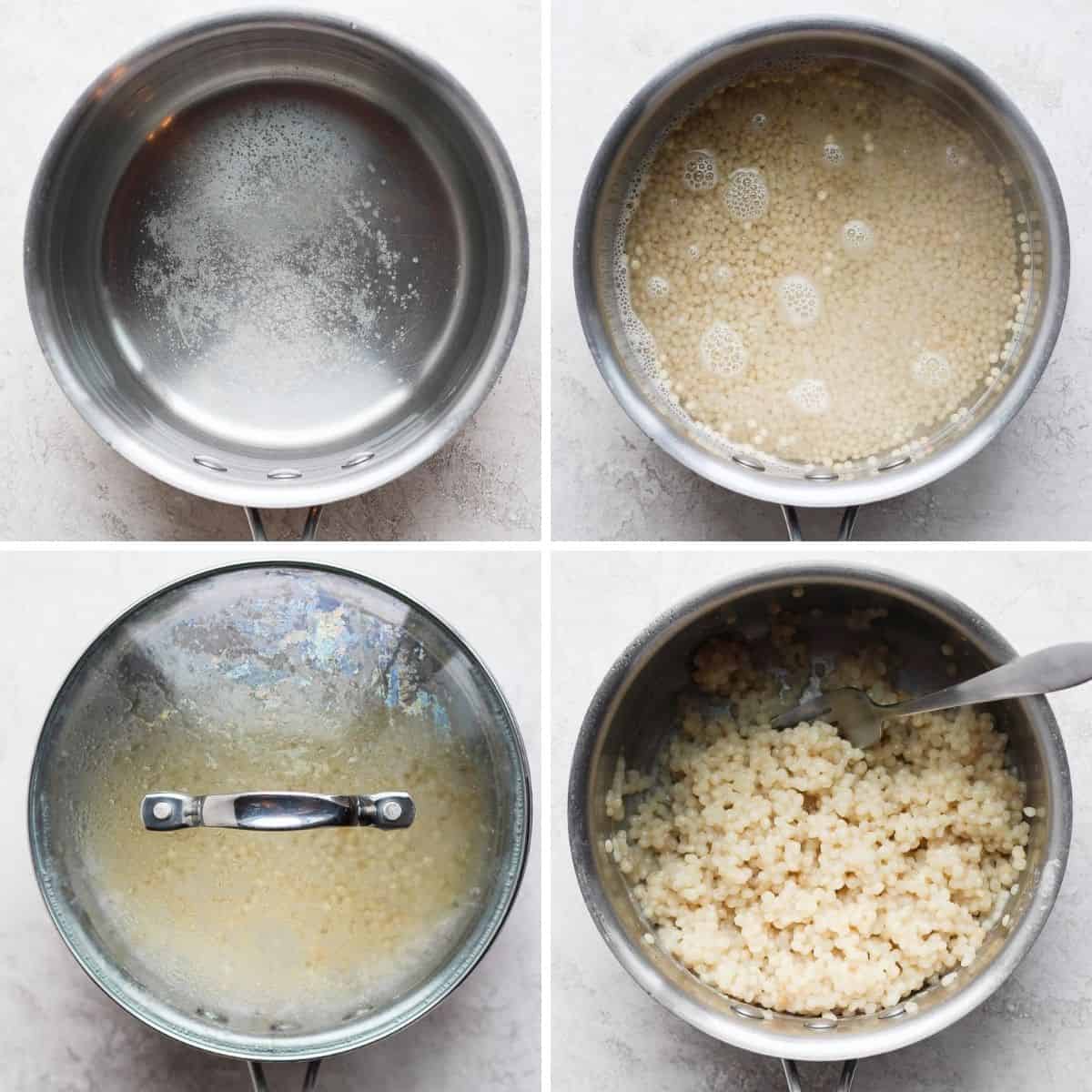
Lebanese couscous cooking instructions
- In a small pot, bring water or stock along with salt to a boil.
- Add couscous and olive oil. Then reduce to a simmer.
- Cover and cook until all liquid has been absorbed, stirring occasionally, about 15 minutes.
- Remove from heat and let stand, covered, for a few minutes. Make sure to fluff with a fork before you serve.
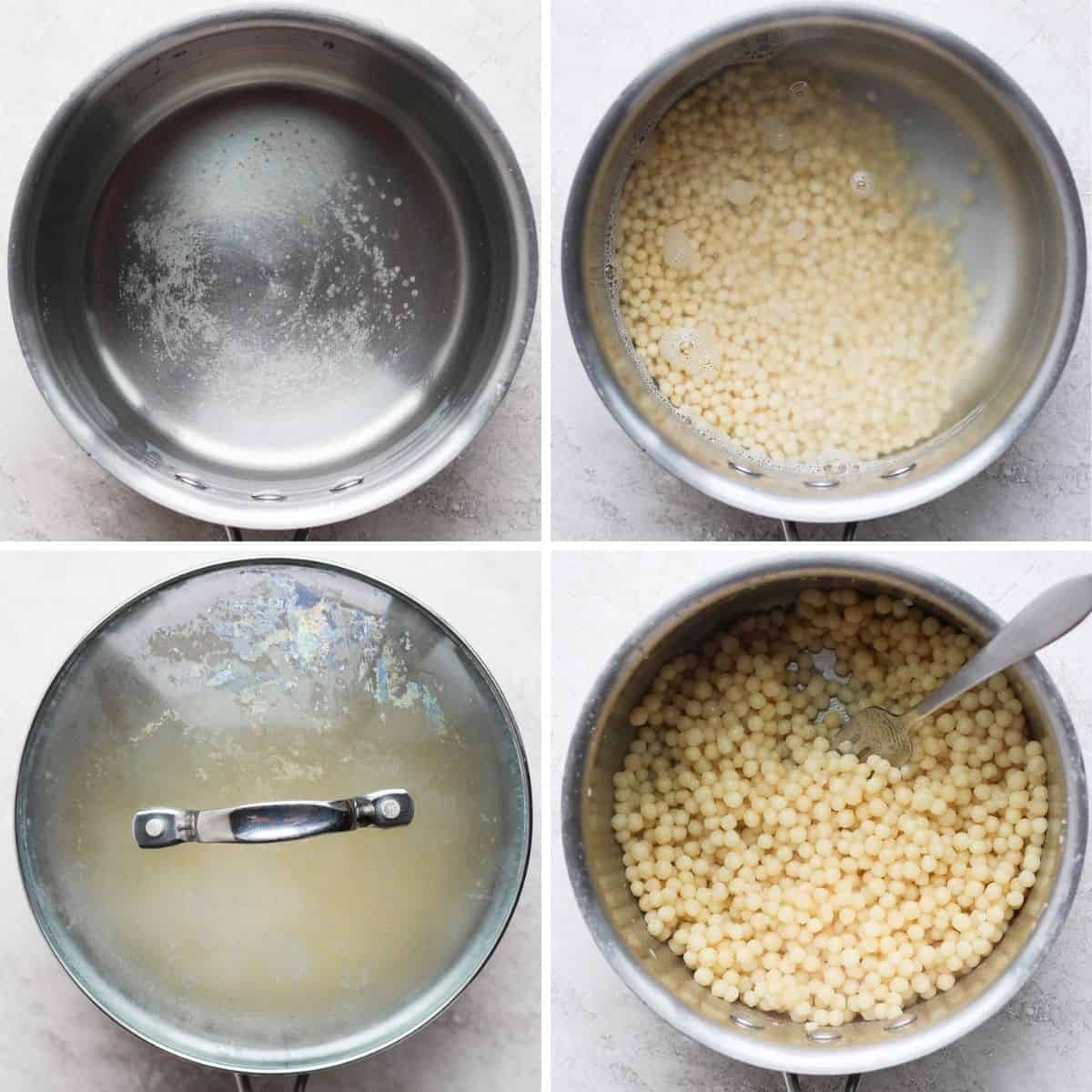
Recipes with couscous
- Mediterranean Couscous Salad
- Skillet Chicken with Couscous
- Mediterranean Couscous with Shrimp
- Air Fryer Salmon
- Chicken Fajita Stuffed Peppers
- Moghrabieh
- Minty Couscous
- Tomato Garlic Parmesan Couscous
- Couscous with Raisins and Almonds
- Herbed Couscous
Frequently asked questions
It will be fine for three days. But also, consider what foods – fish or chicken – you may have mixed it with.
It is best not to freeze cooked couscous. The texture will not be the same when you defrost it. Plus, it cooks very quickly, making it a simple grain to prep.
Like all my dry goods – including flours, quinoa, and oats – I transfer my couscous from its store packaging to an airtight glass or plastic container. That way, any pantry pests that may have been hitching a ride packaging (especially in cardboard!) are thrown away.
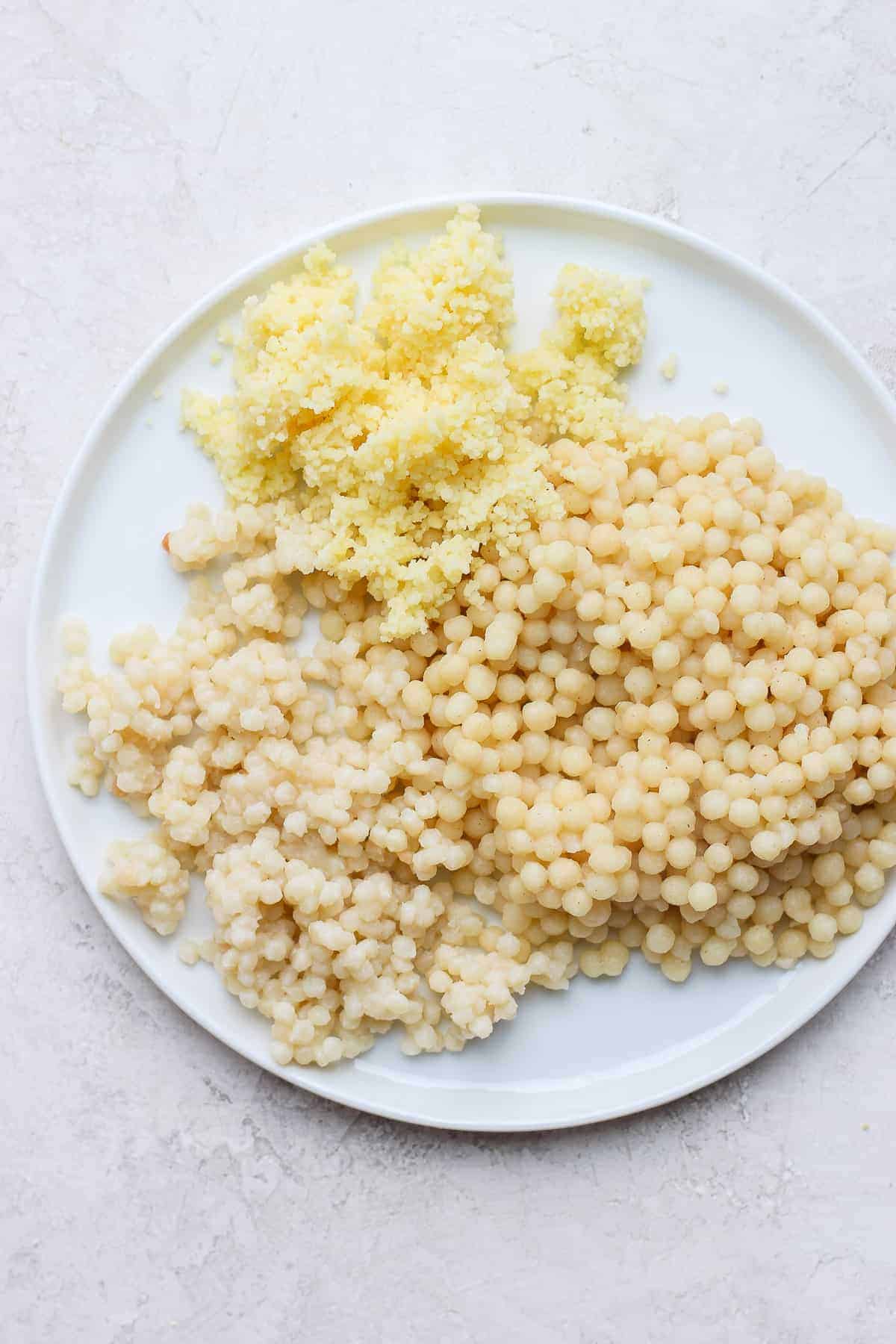
In the U.S., couscous is usually a savory dish, but in the Middle East it sometimes gets mixed with sugar and fruits for a sweet finish to meals.
For more cooking tutorials, check out:
- How to Make Oatmeal
- How to Cook Pasta Perfectly
- How to Cook Dry Chickpeas
- How to Cook Brown Rice
- How to Cook Quinoa Step by Step
- How to Make Homemade Marinara Sauce
- How to Make Oat Flour in Vitamix
- How to Make Pesto
If you’ve found this cooking resource for How to Cook Couscous helpful or if you’ve tried any recipe on FeelGoodFoodie, then don’t forget to rate the recipe and leave me a comment below! I would love to hear about your experience with this technique. And if you snapped some shots of it, share it with me on Instagram so I can repost on my stories!
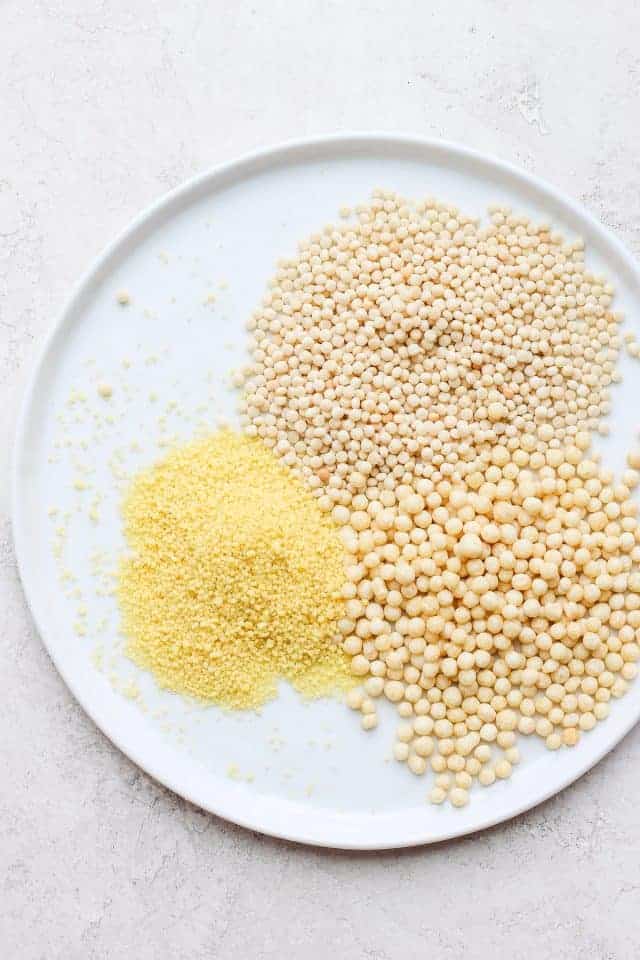
How to Cook Couscous
Ingredients
Moroccan Couscous
- 1 cup Moroccan couscous
- 1 cup water/stock
- Pinch salt
Instructions
Moroccan Couscous
- In a small pot, bring water or stock along with salt to a boil.
- Add rinsed couscous, stir vigorously until all the liquid is absorbed, about 30 seconds to a minute.
- Remove from heat and let stand, covered, for 5 minutes. Fluff with a fork and serve.
Pearl Couscous
- Rinse couscous in a colander with cold water, making sure to agitate the couscous with your hands to rinse it, drain immediately.
- In a small pot, bring water or stock along with salt to a boil.
- Add couscous and olive oil, reduce to a simmer.
- Cover and cook until all liquid has been absorbed, stirring occasionally, about 10 minutes.
Lebanese Couscous
- In a small pot, bring water or stock along with salt to a boil.
- Add couscous and olive oil, reduce to a simmer.
- Cover and cook until all liquid has been absorbed, stirring occasionally, about 15 minutes.
- Remove from heat and let stand, covered, for 5 minutes. Fluff with a fork and serve.
Equipment
Notes
Nutrition
Nutrition information provided is an estimate. It will vary based on cooking method and specific ingredients used.
Photo Credit: Erin Jensen
